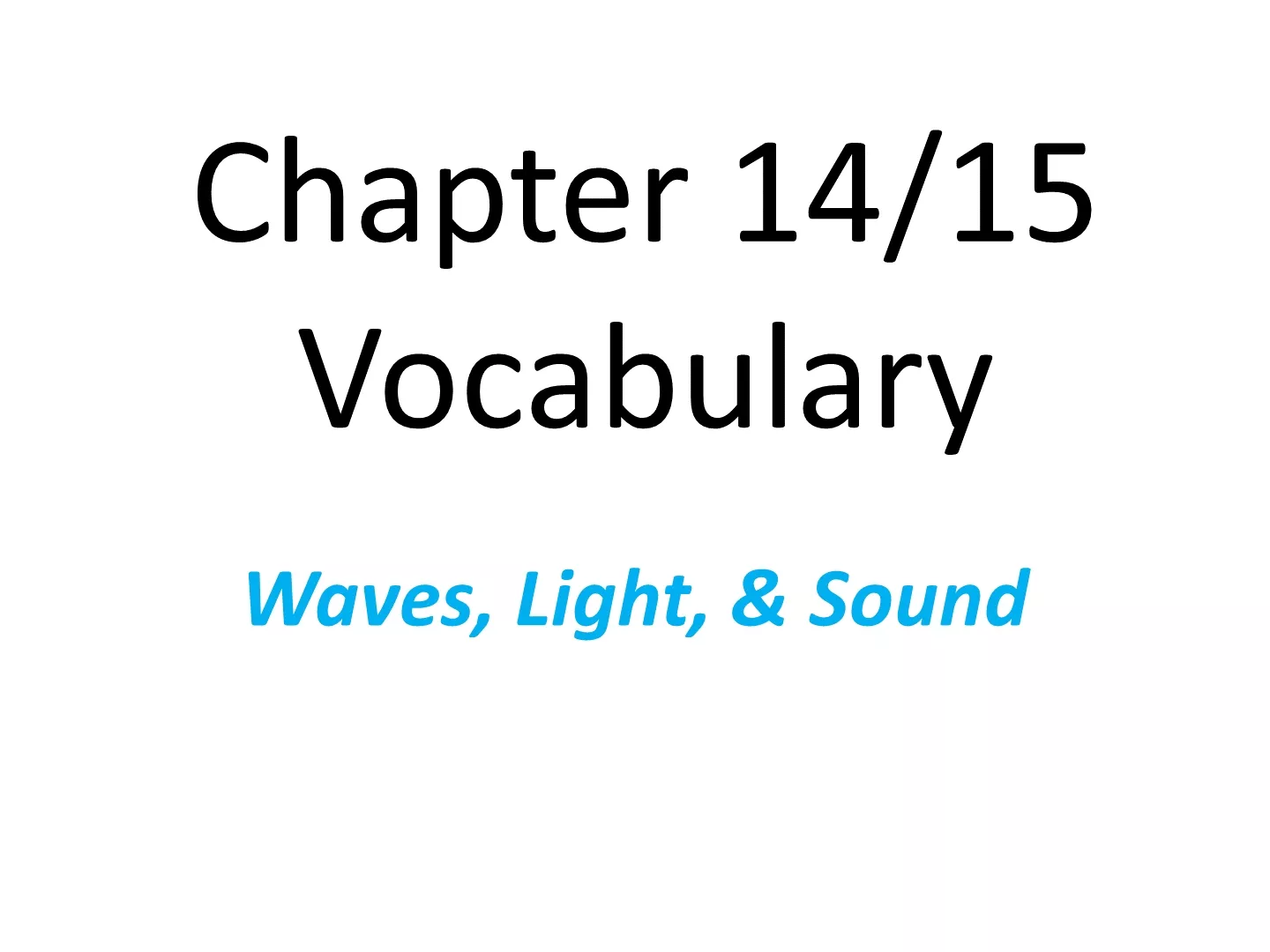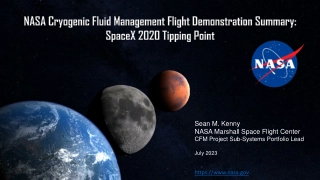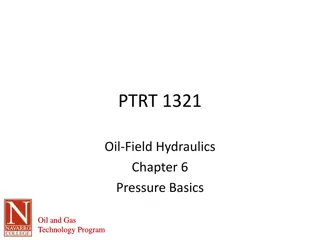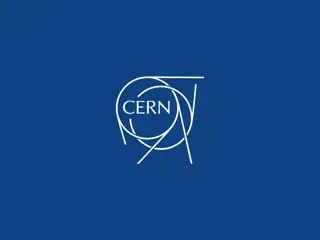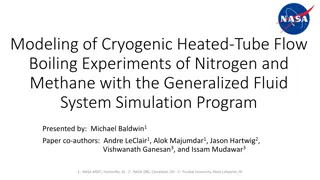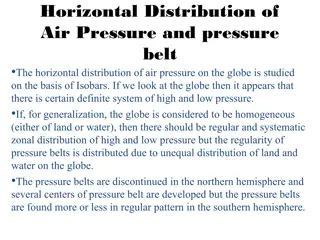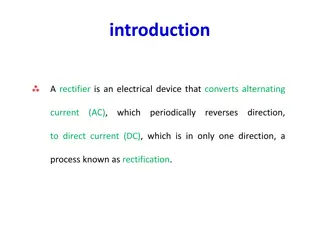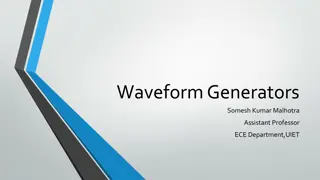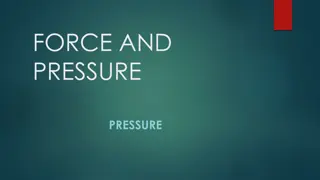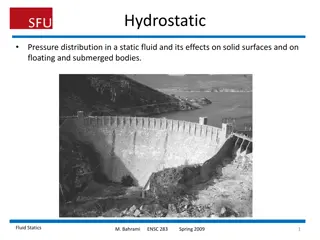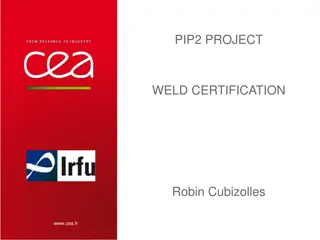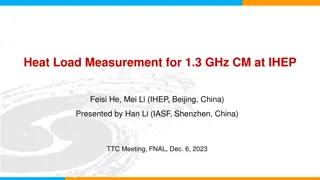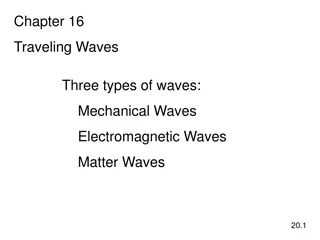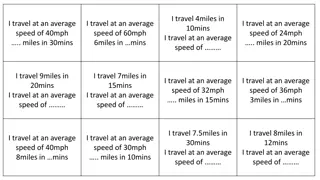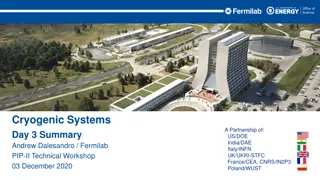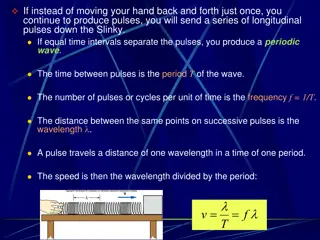Pressure Wave Calculations in Cryogenic Systems
Presentation on pressure wave calculations by R. Rabehl regarding potential differential longitudinal pressure issues in cryogenic systems, specifically related to changing valve positions and their impact on cold masses. The calculations involve dynamic pressure surges using water hammer calculations and account for phase changes through the valve. Corrections are made for flow cross-section changes, resulting in reduced pressure surges in the cold masses compared to the original pipe calculations.
Download Presentation

Please find below an Image/Link to download the presentation.
The content on the website is provided AS IS for your information and personal use only. It may not be sold, licensed, or shared on other websites without obtaining consent from the author.If you encounter any issues during the download, it is possible that the publisher has removed the file from their server.
You are allowed to download the files provided on this website for personal or commercial use, subject to the condition that they are used lawfully. All files are the property of their respective owners.
The content on the website is provided AS IS for your information and personal use only. It may not be sold, licensed, or shared on other websites without obtaining consent from the author.
E N D
Presentation Transcript
Pressure wave calculations R. Rabehl March 14, 2022
At the Feb. 3 meeting of the HL LHC TCC (Technical Coordination Committee), a presentation about different scenarios that would result in differential longitudinal pressure across inner triplet cold masses, possibly affecting the cold mass function requirements. One scenario was opening a valve to connect the inner triplet to the QRL cryogenic distribution line (P&ID on next slide) 2 R. Rabehl | Pressure wave calculations March 14, 2022
3 R. Rabehl | Pressure wave calculations March 14, 2022
Used water hammer calculations to look at the dynamic pressure surge that the Q1 cold mass would see as a result of changing the valve position (docdb 4296). For a sudden change in valve position, the pressure surge depends on the downstream LHe density, the speed of sound in downstream LHe, and how fast the fluid interface moves at the valve (depends on flow rate through the valve) For a gradual change in valve position, the pressure surge depends on the downstream LHe density, length of the pipe, speed of fluid interface motion, and how long the valve moves: Where sudden valve position change means (2L/c = 0.168 s here) 4 R. Rabehl | Pressure wave calculations March 14, 2022
Change of phase through the valve (supercritical upstream, two-phase downstream) makes calculating the flow rate through the valve difficult, so multiple methods were used. Pressure surge in the pipe was calculated for sudden valve motion and gradual valve motions over 0.2 s, 0.5 s, and 1 s. 5 R. Rabehl | Pressure wave calculations March 14, 2022
Need to correct previous slides results for the change in flow cross-section between the pipe and the cold mass (a factor of 200). The pressure wave s energy flux through the cold mass end volume LHe is 200x less than in the pipe. Since the pressure wave s energy is proportional to the square of the amplitude, the pressure surge in the cold mass end volume is reduced by a factor of sqrt(200) = 14.1 compared to the pipe. Taking the worst cases from the previous slide and reducing by a factor of 14.1 gives the cold mass pressure surges: The calculated pressure surge at the cold mass is much less than the pressure differential across the valve. 6 R. Rabehl | Pressure wave calculations March 14, 2022
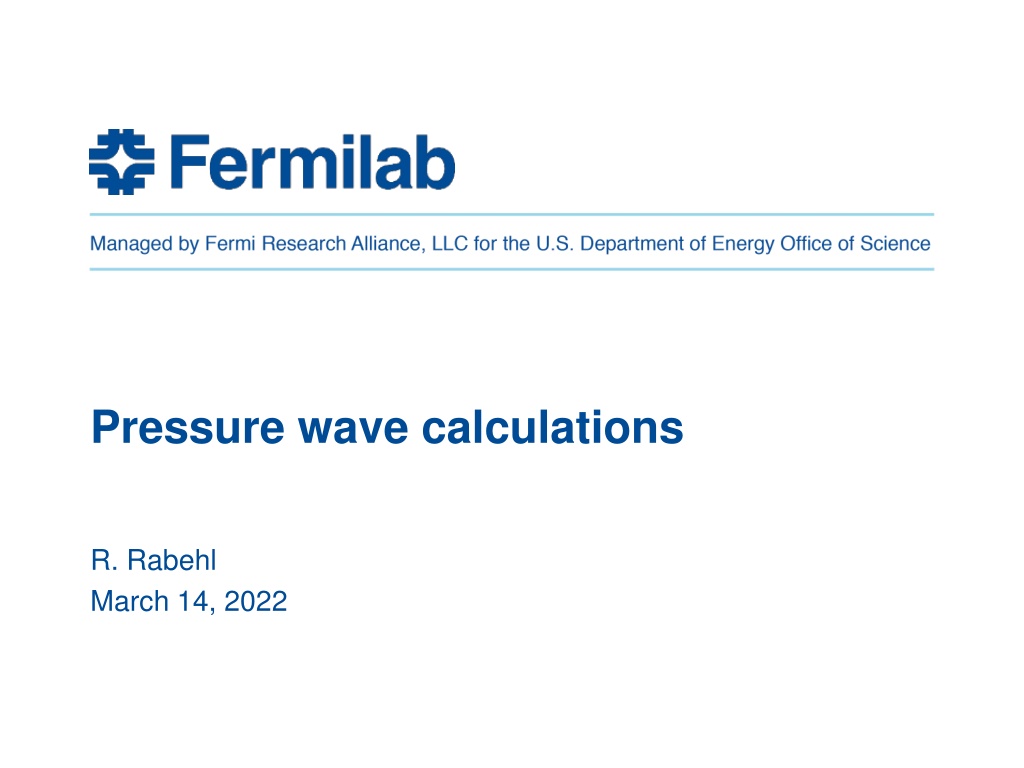
 undefined
undefined


